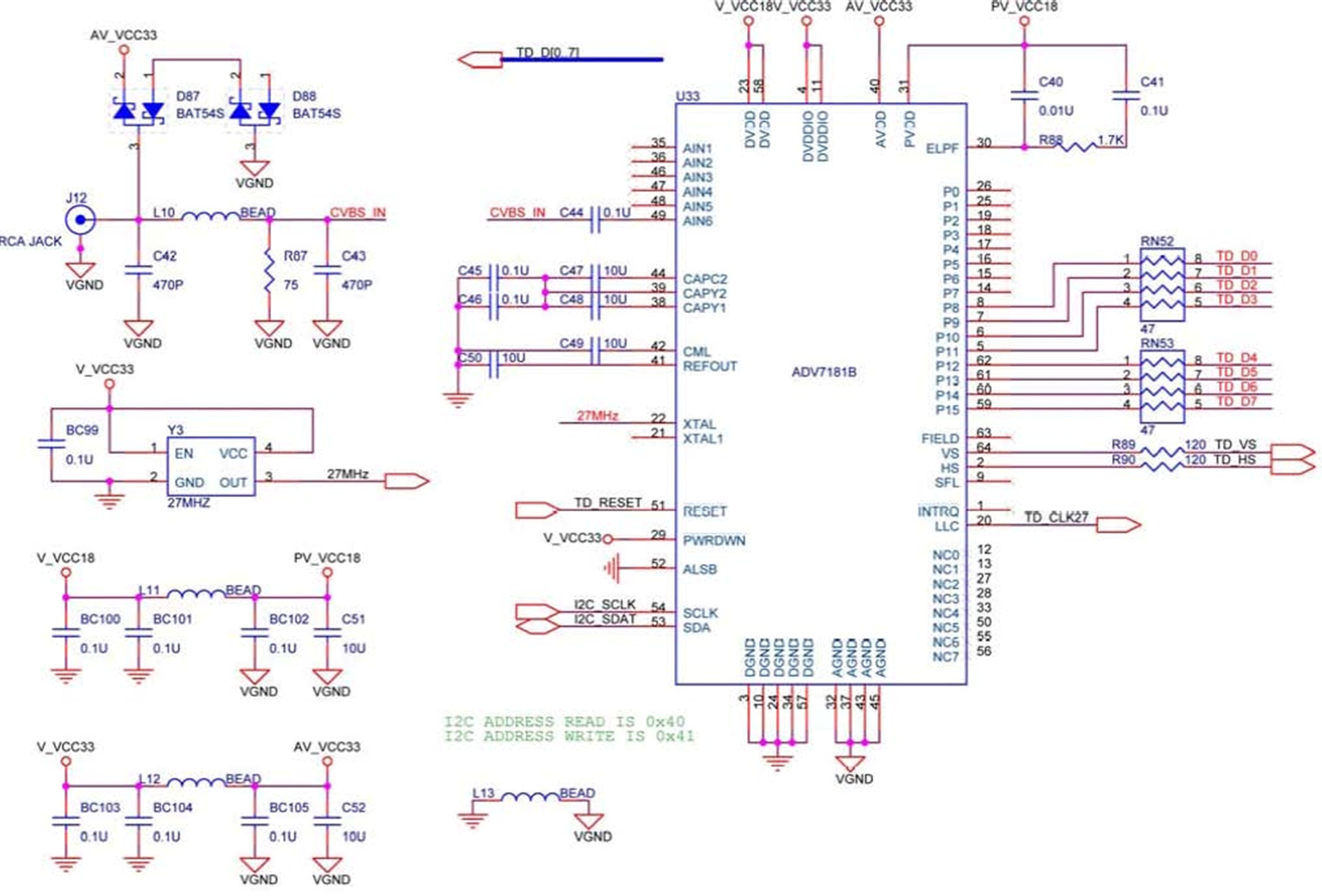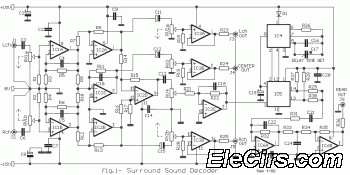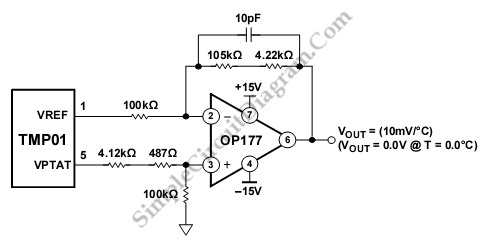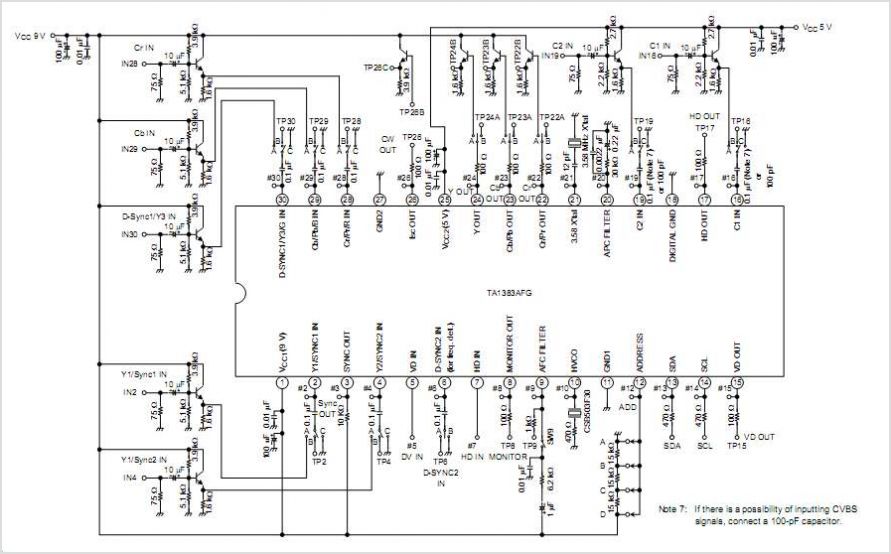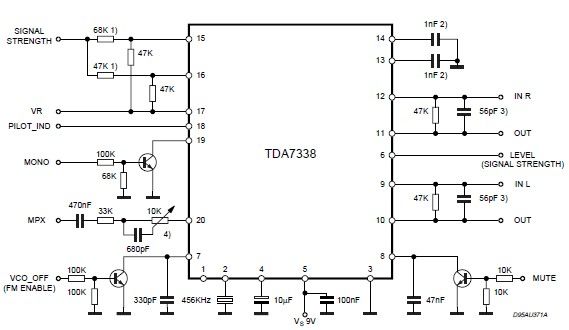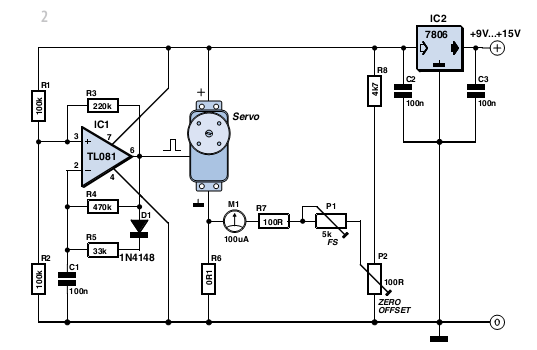
SCA decoder
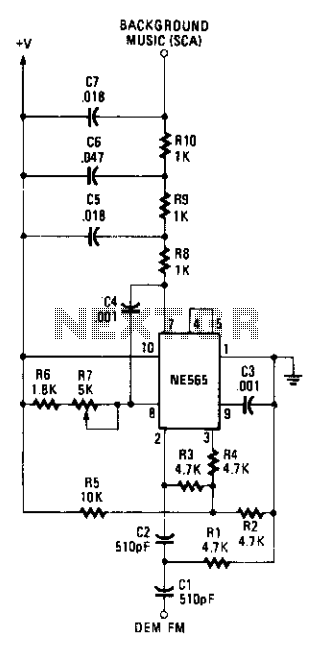
The circuit employs a Signetics NE565 Phase-Locked Loop (PLL) as a detector to recover the SCA signal. The input to the SCA decoder circuit is connected to an FM receiver at a point between the FM discriminator and the de-emphasis filter network. The PLL, designated as IC1, is tuned to 67 kHz using R7, a 5 kΩ potentiometer. Precise tuning is not required, as the circuit is designed to seek and lock onto the subcarrier. The demodulated signal from the FM receiver is directed to the input of the 565 through a high-pass filter composed of two 510 pF capacitors (C1 and C2) and a 4.7 kΩ resistor (R1). The purpose of this high-pass filter is to serve as a coupling network and to attenuate some of the main channel spill. The demodulated SCA signal at pin 7 is then processed through a three-stage de-emphasis network, resulting in an output signal of approximately 50 mV, with a response extending to around 7 kHz.
The circuit's core functionality hinges on the NE565 PLL, which operates by locking onto the frequency of the SCA subcarrier signal. This capability allows for effective demodulation of the signal, which is crucial in applications where subcarrier signals are utilized, such as in broadcasting or data transmission. The connection point between the FM discriminator and the de-emphasis network is critical, as it ensures that the SCA decoder receives a clean signal free from significant noise or distortion.
The tuning mechanism provided by the 5 kΩ potentiometer (R7) allows for some flexibility in adjusting the PLL to the desired frequency. The design's robustness is enhanced by the high-pass filter, which not only isolates the SCA signal from the main audio channel but also prevents lower frequency noise from affecting the demodulation process. The choice of capacitors (C1 and C2) and the resistor (R1) in the high-pass filter is essential for achieving the desired cutoff frequency, ensuring that the SCA signal is effectively coupled while attenuating unwanted components.
Following the PLL demodulation, the signal undergoes further processing through a three-stage de-emphasis network. This stage is designed to restore the frequency response of the SCA signal, particularly in the mid to high-frequency range, thus ensuring a clear and intelligible output. The output level of approximately 50 mV is suitable for subsequent stages, which may include additional amplification or further signal processing, depending on the specific application requirements.
Overall, this circuit design effectively utilizes the NE565 PLL for SCA signal recovery, with thoughtful consideration given to filtering and signal processing stages to ensure high fidelity and reliability in the demodulated output.The circuit uses a Signetics NE565 PLL (Phase-Locked Loop) as a detector to recover the SCA signal. The input to the SCA decoder circuit is connected to an FM receiver at a point between the FM discriminator and the de-emphasis filter network. The PLL, IC1, is tuned to 67 kHz by R7, a 5 potentiometer. Tuning need not be exact since the circuit will seek and lock onto the subcarrier. The demodulated signal from the FM receiver is fed to the input of the 565 through a high-pass filter consisting of two 510 pF capacitors (CI and C2) and a 4.7 resistor (Rl).
Its purpose is to serve as a coupling network and to attenuate some of the main channel spill. The demodulated SCA signal at pin 7 passes through a three-stage de-emphasis network as shown. The resulting signal is around 50 mV, with the response extending to around 7 kHz.
The circuit's core functionality hinges on the NE565 PLL, which operates by locking onto the frequency of the SCA subcarrier signal. This capability allows for effective demodulation of the signal, which is crucial in applications where subcarrier signals are utilized, such as in broadcasting or data transmission. The connection point between the FM discriminator and the de-emphasis network is critical, as it ensures that the SCA decoder receives a clean signal free from significant noise or distortion.
The tuning mechanism provided by the 5 kΩ potentiometer (R7) allows for some flexibility in adjusting the PLL to the desired frequency. The design's robustness is enhanced by the high-pass filter, which not only isolates the SCA signal from the main audio channel but also prevents lower frequency noise from affecting the demodulation process. The choice of capacitors (C1 and C2) and the resistor (R1) in the high-pass filter is essential for achieving the desired cutoff frequency, ensuring that the SCA signal is effectively coupled while attenuating unwanted components.
Following the PLL demodulation, the signal undergoes further processing through a three-stage de-emphasis network. This stage is designed to restore the frequency response of the SCA signal, particularly in the mid to high-frequency range, thus ensuring a clear and intelligible output. The output level of approximately 50 mV is suitable for subsequent stages, which may include additional amplification or further signal processing, depending on the specific application requirements.
Overall, this circuit design effectively utilizes the NE565 PLL for SCA signal recovery, with thoughtful consideration given to filtering and signal processing stages to ensure high fidelity and reliability in the demodulated output.The circuit uses a Signetics NE565 PLL (Phase-Locked Loop) as a detector to recover the SCA signal. The input to the SCA decoder circuit is connected to an FM receiver at a point between the FM discriminator and the de-emphasis filter network. The PLL, IC1, is tuned to 67 kHz by R7, a 5 potentiometer. Tuning need not be exact since the circuit will seek and lock onto the subcarrier. The demodulated signal from the FM receiver is fed to the input of the 565 through a high-pass filter consisting of two 510 pF capacitors (CI and C2) and a 4.7 resistor (Rl).
Its purpose is to serve as a coupling network and to attenuate some of the main channel spill. The demodulated SCA signal at pin 7 passes through a three-stage de-emphasis network as shown. The resulting signal is around 50 mV, with the response extending to around 7 kHz.
